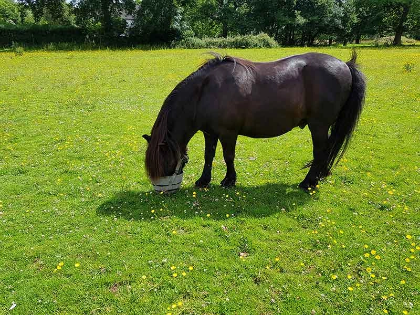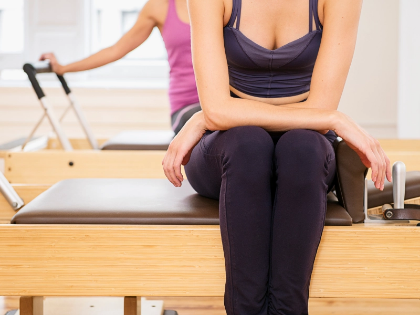The Top 10 Pilates Moves to Improve Posture
It's critical to maintain proper posture for both your beauty and health. Muscle tension, joint pain, and difficulty breathing can result from a hunched back and slouching posture. Fortunately, regular Pilates workouts will help you achieve better posture. The core muscles that support the spine are strengthened by these exercises.
1. Take a roll.
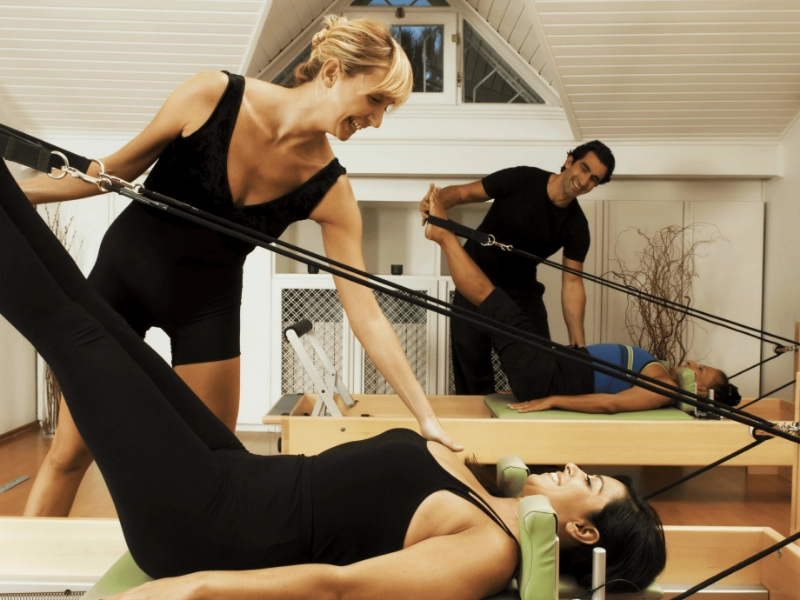
2. Twist of the spine
 You may improve trunk and spinal mobility and develop your core muscles by doing the spine twist. This encourages improved posture alignment and lessens strain on the back.
It's crucial to rotate the spine just far enough to cause a minor stretch rather than an excruciating strain. Separating the knees and damaging the lumbar spine is a common mistake. By maintaining the knees level and extending the spine upward, this can be prevented.
You may improve trunk and spinal mobility and develop your core muscles by doing the spine twist. This encourages improved posture alignment and lessens strain on the back.
It's crucial to rotate the spine just far enough to cause a minor stretch rather than an excruciating strain. Separating the knees and damaging the lumbar spine is a common mistake. By maintaining the knees level and extending the spine upward, this can be prevented.
3. Adjacent Board
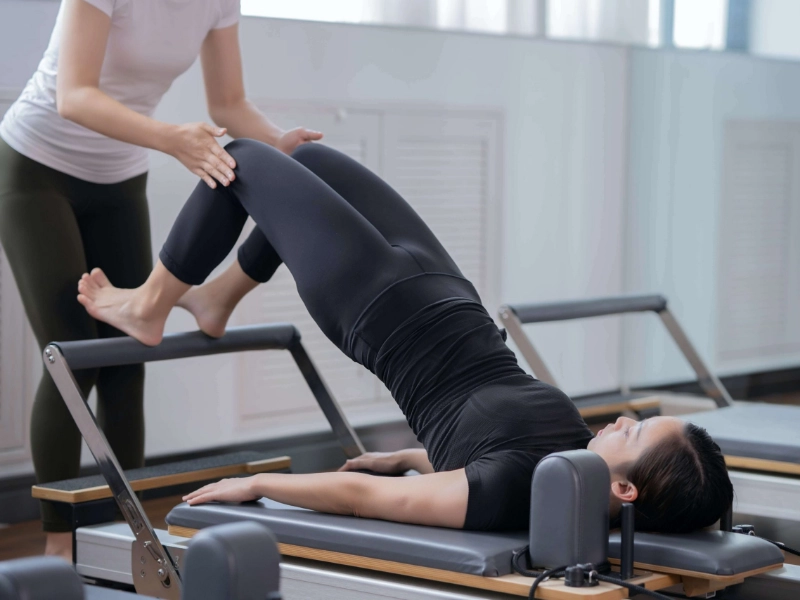 Maintaining proper posture is vital for your health as well as your appearance. According to research, slouching can cause constipation and heartburn, among other digestive issues (2).
Pilates workouts help strengthen the muscles surrounding your spine, which can aid with posture correction. The muscles involved in this are the obliques, quadratus lumborum, and erector spinae. To strengthen these muscles and add a challenge to your balance, try this Pilates variation: side plank with rotation.
Maintaining proper posture is vital for your health as well as your appearance. According to research, slouching can cause constipation and heartburn, among other digestive issues (2).
Pilates workouts help strengthen the muscles surrounding your spine, which can aid with posture correction. The muscles involved in this are the obliques, quadratus lumborum, and erector spinae. To strengthen these muscles and add a challenge to your balance, try this Pilates variation: side plank with rotation.
4. Tapes on Toes
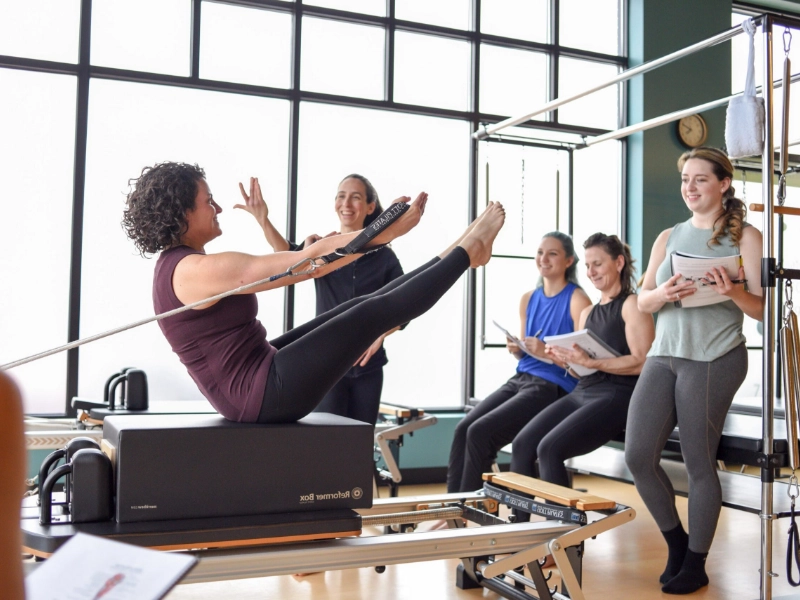 In addition to being unsightly, a bent back can cause diminished lung capacity, joint pain, and muscle strain. The good news is that Pilates improves your gait by strengthening your core muscles.
Tone your abs and straighten your posture at home with this easy Pilates routine. As you advance, accelerate your tapping to push yourself beyond your comfort zone.
In addition to being unsightly, a bent back can cause diminished lung capacity, joint pain, and muscle strain. The good news is that Pilates improves your gait by strengthening your core muscles.
Tone your abs and straighten your posture at home with this easy Pilates routine. As you advance, accelerate your tapping to push yourself beyond your comfort zone.
5. Stretching with Just One Leg
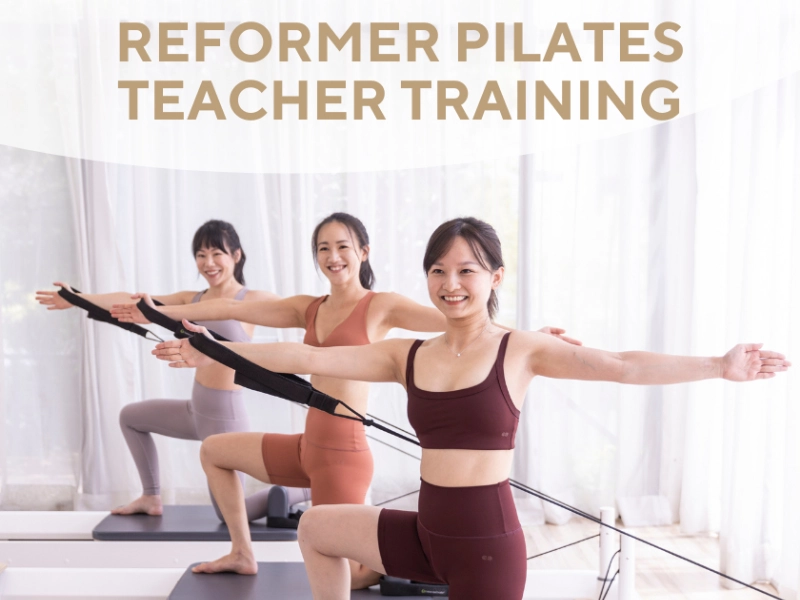 A genuine core exercise, the single-leg stretch calls for focus and control. It resembles cat stretches pretty closely as they wake up from sleep!
Begin with your legs in the tabletop posture and your knees bent. While keeping the left knee elevated above the mat, extend the right leg straight ahead. On each leg, repeat ten times.
A genuine core exercise, the single-leg stretch calls for focus and control. It resembles cat stretches pretty closely as they wake up from sleep!
Begin with your legs in the tabletop posture and your knees bent. While keeping the left knee elevated above the mat, extend the right leg straight ahead. On each leg, repeat ten times.
6. Hover Knee
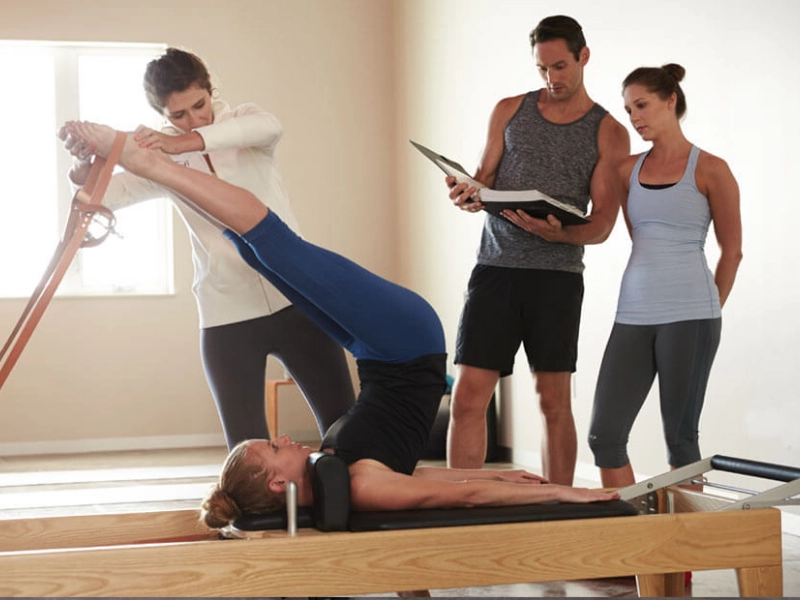 By strengthening your core, the hover exercise can be incorporated into your regular Pilates routine to help improve posture. Additionally, it maintains the shoulders and hips in a neutral, "functional" position.
The hover doesn't strain the wrists like the plank does. It is therefore perfect for people with wrist or shoulder problems. Additionally, it increases the intensity by relieving you of one of your support arms, which puts more strain on your obliques to maintain a square trunk.
By strengthening your core, the hover exercise can be incorporated into your regular Pilates routine to help improve posture. Additionally, it maintains the shoulders and hips in a neutral, "functional" position.
The hover doesn't strain the wrists like the plank does. It is therefore perfect for people with wrist or shoulder problems. Additionally, it increases the intensity by relieving you of one of your support arms, which puts more strain on your obliques to maintain a square trunk.
7. Observed
 For optimal posture and injury prevention, having a strong core is crucial, regardless of whether you are an athlete or spend most of your day at a desk. The saw is an excellent exercise to improve spinal articulation and strengthen the obliques.
With one leg outstretched and the other bowed, begin in the tabletop position. Exhaling causes the spine to flex down the length of the outstretched leg, while inhaling causes the thoracic spine to rotate.
For optimal posture and injury prevention, having a strong core is crucial, regardless of whether you are an athlete or spend most of your day at a desk. The saw is an excellent exercise to improve spinal articulation and strengthen the obliques.
With one leg outstretched and the other bowed, begin in the tabletop position. Exhaling causes the spine to flex down the length of the outstretched leg, while inhaling causes the thoracic spine to rotate.
8. Changing Leg Lift
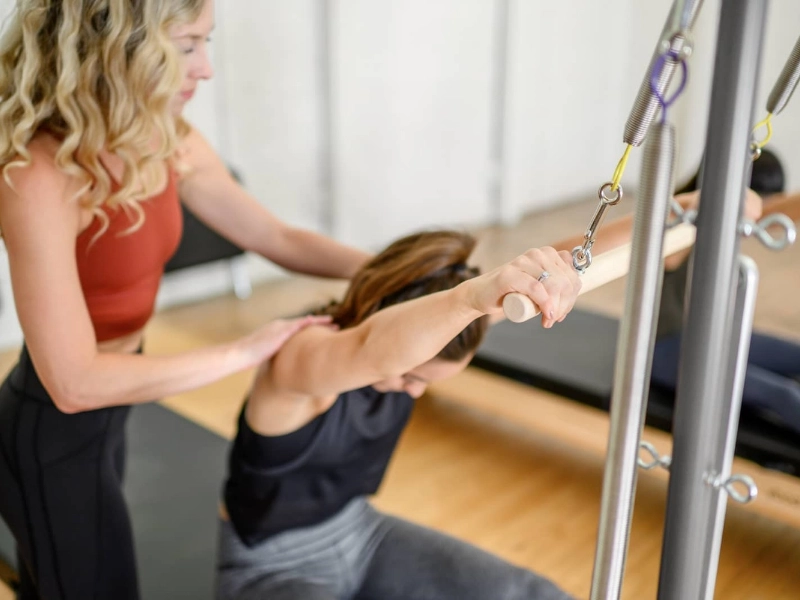 An efficient, core-focused exercise that can improve posture is the alternating leg lift. Preventing lower back arching, however, might be difficult for novices or people with back problems.
Laying flat on your back, begin by raising one leg slowly until it is just over the mat. Go back to the beginning and repeat on the opposite side.
An efficient, core-focused exercise that can improve posture is the alternating leg lift. Preventing lower back arching, however, might be difficult for novices or people with back problems.
Laying flat on your back, begin by raising one leg slowly until it is just over the mat. Go back to the beginning and repeat on the opposite side.
9. Quicken Your Pace
 Pilates, yoga, and barre exercises frequently incorporate pulsating movements, which can be an effective way to improve posture. They generate strength, rapidly exhaust muscles, and engage them.
To have healthy bones, muscles, and joints, one must have proper posture. Include these exercises in your regimen on a regular basis to improve your posture. The outcomes can be quite remarkable. despite your lack of experience.
Pilates, yoga, and barre exercises frequently incorporate pulsating movements, which can be an effective way to improve posture. They generate strength, rapidly exhaust muscles, and engage them.
To have healthy bones, muscles, and joints, one must have proper posture. Include these exercises in your regimen on a regular basis to improve your posture. The outcomes can be quite remarkable. despite your lack of experience.
10. Board
 The plank exercise is essential for maintaining proper posture because it develops the muscles that stabilise and support the spine. According to Current Sports Medicine Reports, the back is under a lot of stress when these muscles are weak.
Laying on your stomach, placing your forearms on the mat, and bending your legs into a push-up position is how you perform a plank. Squeeze your abs and elevate your arms to form a straight line from your shoulders to your heels while maintaining the tightness in your core.
The plank exercise is essential for maintaining proper posture because it develops the muscles that stabilise and support the spine. According to Current Sports Medicine Reports, the back is under a lot of stress when these muscles are weak.
Laying on your stomach, placing your forearms on the mat, and bending your legs into a push-up position is how you perform a plank. Squeeze your abs and elevate your arms to form a straight line from your shoulders to your heels while maintaining the tightness in your core.


